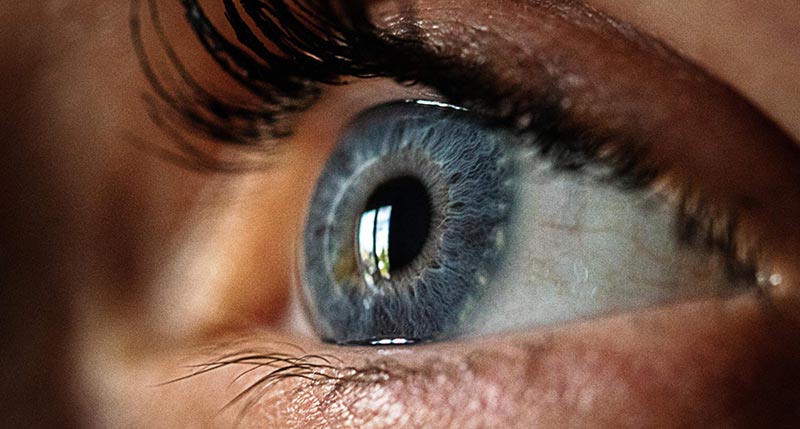
05 Feb How To Reduce Your Risk for Eye Cancer
How To Reduce Your Risk for Eye Cancer (And All Cancers)
February is National Cancer Prevention Month: A great time to review practical ways to reduce your risk for becoming a cancer statistic.
The National Cancer Institute estimates that 2 million Americans were diagnosed with cancer in 2024. That is a sobering statistic, especially because 600,000 people did not survive that diagnosis. Over 40% of people diagnosed with cancer and nearly half of the deaths associated with cancer were linked to preventable causes. That is almost half. It is eye-opening to realize that 40% of cancer diagnoses are considered preventable.
Let’s take a closer look at some of cancer’s most common and preventable causes, because being armed with the right information can help you reduce your risk.
5 Preventable Causes of Cancer
Our modern lifestyle often contributes to creating the conditions in our bodies where cancer can grow and thrive. But by committing to a few lifestyle changes, you can significantly lower your risk.
- Though there has been a marked decline in smoking in recent decades, the American Cancer Society says that nearly 20% of all cancers can be linked to smoking, and 30% of all cancer deaths are attributable to the habit. At least 17 different types of cancer are associated with smoking, and it is estimated that smokers die 10 years younger than those who have never smoked. Additionally, secondhand smoke is estimated to cause 41,000 deaths per year among adults in the U.S. The solution is simple: Put down the cigarettes, cigars, e-cigarettes and STOP SMOKING!
- Excess Body Weight. Globally, rates of obesity doubled between 1990 and 2022, as confirmed by the World Health Organization. Obesity in American adults and children is increasing at an alarming rate, with 7.6% of all cancers attributable to excessive body weight. A healthy diet can reduce the risk of developing or dying from obesity-associated cancers. To adopt a healthier diet, nix the fast food, red meat, processed food, and sugars — and jump on the bandwagon of fish, chicken, fresh fruits, vegetables, and whole grains.
- Physical Inactivity. Did you know that regular exercise and physical activity can reduce your risk for 9 different types of cancer? One study found a 50% lower rate of all-cause cancer and cancer deaths in individuals who exercised regularly. Go out for a walk — even for just 10 minutes at lunch! Take the stairs instead of the elevator! Sign up for a dance class or meet a friend at the gym twice a week. Get moving!
- Alcohol Intake. Excessive alcohol consumption increases the risk of 6 different types of cancer, including colorectal cancer. And here’s a sobering fact: 51% of Americans aren’t aware that alcohol increases the risk of certain types of cancer. Make a concerted effort to cut back or refrain from alcohol consumption, and you can decrease your risk of developing alcohol-related cancers by 8% and all cancers by 4%. Cutting back on alcoholic drinks is now easier than ever with the wide array of mocktails available in restaurants and grocery stores.
- UV Exposure. Exposure to the sun and artificial sources of UV radiation, such as tanning beds, damages cellular DNA and can lead to the development of skin cancers. UV exposure accounts for 4.6% of all cancers and 95% of skin cancers. If you are light-skinned or easily sunburned, you’re at an even higher risk. So, here’s the plan: Apply a broad-spectrum sunscreen of SPF 30 or higher before you go outside — even on cloudy days. Reapply if you’re in the water at a pool, lake, or the ocean. Remember, sand reflects the rays of the sun, so wear a hat and protective clothing when you’re outside and limit your time in direct sunlight by seeking some shade.
Eye Cancer Specifics
Now that we have examined causes and prevention for all-cause cancers, what about eye cancer specifically? What can you do to reduce your risk for eye cancer?
The good news is, eye cancer is rare. According to the Cleveland Clinic, about 3,400 people in the U.S. are diagnosed with eye cancer each year. There are often no early warning signs. Eye cancer is most treatable when discovered in its early stages, which is why an annual comprehensive eye exam is so important.
As eye cancer progresses, symptoms can include:
- Blurred, double, or loss of vision
- Flashing lights
- Dark spots on the iris
- Changes in pupil size
- A bulging eye
The most common type of eye cancer is melanoma. There are also secondary intraocular cancers that start somewhere else in the body, such as the breast or lung, and then spread to the eye.
While the exact cause of most eye cancers is unknown, there are actions that you can take to potentially lower your risk:
- Wear wrap-around 100% UVA/UVB-protective sunglasses every day — rain or shine — to protect your eyes and the sensitive skin around them. Consider dark or tinted lenses for optimal protection, especially if you have light-colored eyes.
- Wear a wide-brimmed hat.
- Limit your exposure to intense sunlight.
- Schedule an annual comprehensive eye exam.
No time like the present: Take action on starting your cancer prevention strategy today. Call us to schedule your annual eye exam to keep your eyes healthy and focused on the best that life has to offer!



Sorry, the comment form is closed at this time.